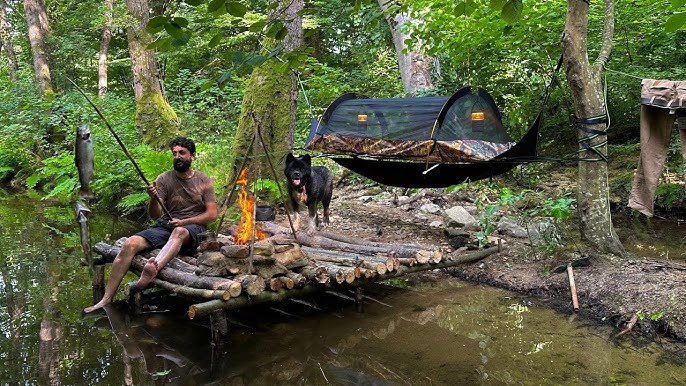Fire-making is a fundamental bushcraft skill that plays a crucial role in survival situations. Mastering various fire-making techniques not only ensures warmth and cooking capability but also aids in signaling for help and providing comfort in the wilderness. This article explores essential fire-making techniques that every survivalist should know. For a comprehensive guide on bushcraft skills.
Why Fire-Making is Crucial
In a survival scenario, fire serves multiple purposes:
- Warmth: Provides essential heat in cold environments, helping to prevent hypothermia.
- Cooking: Enables the preparation of food, which is vital for maintaining energy and nutrition.
- Purification: Boils water to make it safe for drinking, reducing the risk of waterborne diseases.
- Signaling: Can be used to attract attention or signal for help.
- Comfort: Boosts morale and creates a sense of security in challenging situations.
Essential Fire-Making Techniques
1. The Bow Drill
The bow drill is an ancient and reliable fire-making method:
- Materials: Requires a bow, spindle, hearth board, and a bearing block.
- Technique: Use the bow to rotate the spindle against the hearth board, creating friction and heat. Once you generate enough heat, the friction will produce an ember, which can be transferred to tinder and blown into a flame.
2. The Ferrocerium Rod
A ferrocerium rod is a modern and effective fire-starting tool:
- Materials: Consists of a ferrocerium rod and a striker (often made of steel).
- Technique: Scrape the rod with the striker to produce sparks. Direct the sparks onto a prepared tinder bundle to ignite a flame. This method works even in wet conditions and is a popular choice among preppers.
3. Fire Plough
The fire plough method uses friction to create a fire:
- Materials: Requires a fire plough board and a piece of wood.
- Technique: Plough a groove in the board using the piece of wood. Rub the wood back and forth along the groove to create friction and heat. Once an ember forms, transfer it to your tinder and blow gently to ignite.
4. Fire by Solar Concentration
Solar concentration uses sunlight to start a fire:
- Materials: Requires a magnifying glass or a similar lens.
- Technique: Focus the sunlight onto a small, concentrated spot on your tinder. The intense heat from the sunlight will ignite the tinder. This method is best used in sunny conditions and requires patience and precision.
5. The Flint and Steel
Flint and steel is a traditional fire-starting technique:
- Materials: Consists of a piece of flint and a steel striker.
- Technique: Strike the steel against the flint to produce sparks. Direct the sparks onto a piece of char cloth or a tinder bundle. Once the tinder ignites, carefully nurture the flame into a fire.
6. Chemical Fire-Making
Chemical fire-making involves using chemical reactions to start a fire:
- Materials: Often involves potassium permanganate and glycerin or other chemical compounds.
- Technique: Mix the chemicals according to safety guidelines. The reaction produces heat, which can ignite the tinder. This method should be used with caution and proper knowledge of chemical reactions.
Tips for Successful Fire-Making
- Prepare Your Tinder: Ensure that your tinder is dry and finely processed. Common tinder materials include dry leaves, bark, and cotton balls.
- Build a Proper Fire Structure: Arrange your kindling and fuel in a way that allows for good airflow and supports the growth of the fire.
- Practice Safety: Always practice fire-making in a safe environment and be aware of fire regulations. Never leave a fire unattended and ensure it is completely extinguished before leaving.
Conclusion
Mastering fire-making techniques is an essential bushcraft skill that enhances your survival capabilities. Whether using traditional methods like the bow drill or modern tools like the ferrocerium rod, having a reliable fire-making strategy is crucial for warmth, cooking, and signaling. For more detailed information on bushcraft skills, explore this guide.




